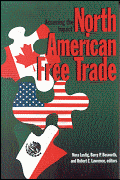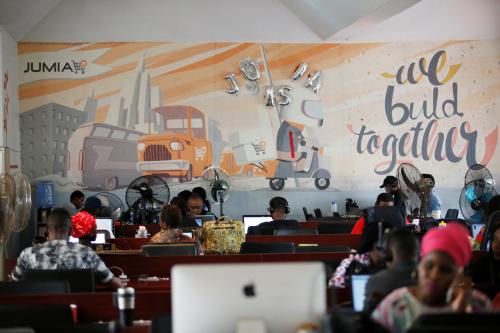Below is a viewpoint from Chapter 1 of the Foresight Africa 2018 report, which explores six overarching themes that provide opportunities for Africa to overcome its obstacles and spur inclusive growth. Read the full chapter on African leadership here.
After weathering the tumultuous year that was 2016, Africa’s economies ended 2017 on a positive note, with an annual growth rate of 2.6 percent and projected increase in 2018 and thereafter. A number of African countries are growing at above 6 percent as foreign direct investment inflows surge. Commodity prices continued to recover in 2017, and global growth and trade are gaining momentum.
With these tailwinds, the continent is looking toward 2018 with renewed and improved prospects. The recent headwinds, however, must not be forgotten. There is an urgent need for all African countries—but especially commodity-dependent countries—to diversify, boost value-added, and industrialize, not only in order to weather future economic storms, but to ensure sustained and inclusive growth and development. African economies also face the potential tsunami, which can arise from a growing unemployed youth population, and a demographic trap that will hold back per capita income growth and possibly widen inequality.
These trends highlight why efforts to bring down tariff and non-tariff barriers among African countries to boost intra-African trade is crucial. The negotiations to establish Africa’s Continental Free Trade Area (CFTA) are moving in the right direction and at the desired pace. Eight rounds of negotiations have yielded positive results: The December 2017 deadline has been met. It is now pending nominal technical work. The Protocol on Trade in Services was agreed upon and adopted by the African Ministers of Trade on December 2, 2017. While the Protocol on Trade in Goods will need more work on the rules of origin and application of the agreed modalities for the liberalization of trade in goods (an ambitious target of 90 percent); an extraordinary African Union Summit is envisaged before the end of March 2018 to complete and sign the entire CFTA agreement.
The CFTA offers substantial opportunities for industrialization, diversification, and employment in Africa. African countries trade more value-added products among themselves, unlike their exports to the rest of the world, which are mainly commodities. For example, in 2014 manufactured goods accounted for 41.9 percent of intra-African exports, significantly higher than the 14.8 percent share for exports outside the continent. Intra-African trade, however, is underexploited owing to high trade costs in the region: As a share of total African trade, it was only 15.3 percent in 2015. The CFTA will change this. The anticipated expansion in intra-African trade is key to creating decent jobs, improving productivity, increasing incomes, and reducing economic vulnerability and risks.
African countries have much to be proud of—negotiating a free trade agreement among 55 countries, each with its own interests, is not an easy task. Concluding the negotiations on schedule, however, is just the first step. The real challenge for 2018 and the years ahead will be implementation of the agreement. Getting the implementation of Africa’s CFTA right will have a game-changing impact on African economies. This will require leadership, an efficient and inclusive institutional architecture; a robust monitoring and evaluation framework; and innovative financing for much-needed investments in infrastructure and productive capacity.
The anticipated expansion in intra-African trade is key to creating decent jobs, improving productivity, increasing incomes, and reducing economic vulnerability and risks.
Africa’s bold new CFTA project should be watched during 2018. The landmark agreement can be pivotal; if implemented right it will uphold and strengthen the positive tailwinds of 2017 and protect the continent against possible future headwinds. The G-20, African conglomerates such as the Dangote Group, international organizations, and global consulting groups are already drawing the attention of international investors to savor the African opportunity: a single market of 1.2 billion people, over $3 trillion in continental GDP, and a growing middle class. The CFTA strengthens the case for Africa as a preferred investment destination.
Note: For an in-depth discussion on what strategies are needed to ensure that the potential of the CFTA is fulfilled, see United Nations Economic Commission for Africa, African Union and African Development Bank Group (2017), “Assessing Regional Integration in Africa (ARIA) VIII: Bringing the CFTA About,” Addis Ababa, Ethiopia.
The Brookings Institution is committed to quality, independence, and impact.
We are supported by a diverse array of funders. In line with our values and policies, each Brookings publication represents the sole views of its author(s).










Commentary
Foresight Africa viewpoint – Africa’s bold move towards integration: The Continental Free Trade Agreement
February 2, 2018